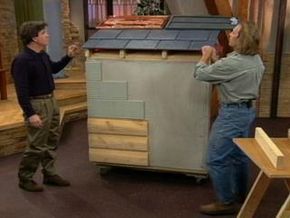There are so many different kinds of adhesives to choose from. With all those different adhesives lining the shelves of craft stores and home improvement stores, how can know which glue you need? For some surfaces, contact cement is the only effective bonding material.
Contact cement, or contact adhesive, is a neoprene rubber adhesive that creates a fast, flexible, permanent bond. It can be used for almost anything but is especially useful for nonporous materials that other adhesives can't glue together. Contact cement works best on plastics, veneers, rubber, glass, metal and leather. It’s used for gluing large surfaces such as countertops in kitchens and bathrooms. Laminates are hard, thin plastic surfaces glued to countertops with contact cement. Other glues wouldn't work because they go on wet, and need to dry after the parts are assembled. In nonporous materials, the moisture can't escape once the parts are joined, and the glue either can't dry completely or takes a long time and requires the use of clamps. Contact cement is already dry on contact. Once the solvent evaporates, the cement forms a flexible bond with no residual moisture. There is no need for clamping, so it can be used for gluing floor tiles, as well.
Advertisement
Contact cement is different from other adhesives because it needs to air-dry for 15 to 20 minutes before assembling. The cement needs to be applied to both parts, so that the glue actually bonds to itself. Contact cement is not sticky; the glue itself is a solid substance. The solvent is added for easier application and must evaporate completely before joining the two parts. It’s tricky to apply because the adhesive needs just momentary contact to form a permanent bond.
Solvent-based contact cement releases volatile organic compounds, which are regulated by the U.S. Environmental Protection Agency because they are toxic and flammable. Make sure your work area is well ventilated. Newer water-based contact cements are nontoxic and environmentally friendly.
Advertisement

